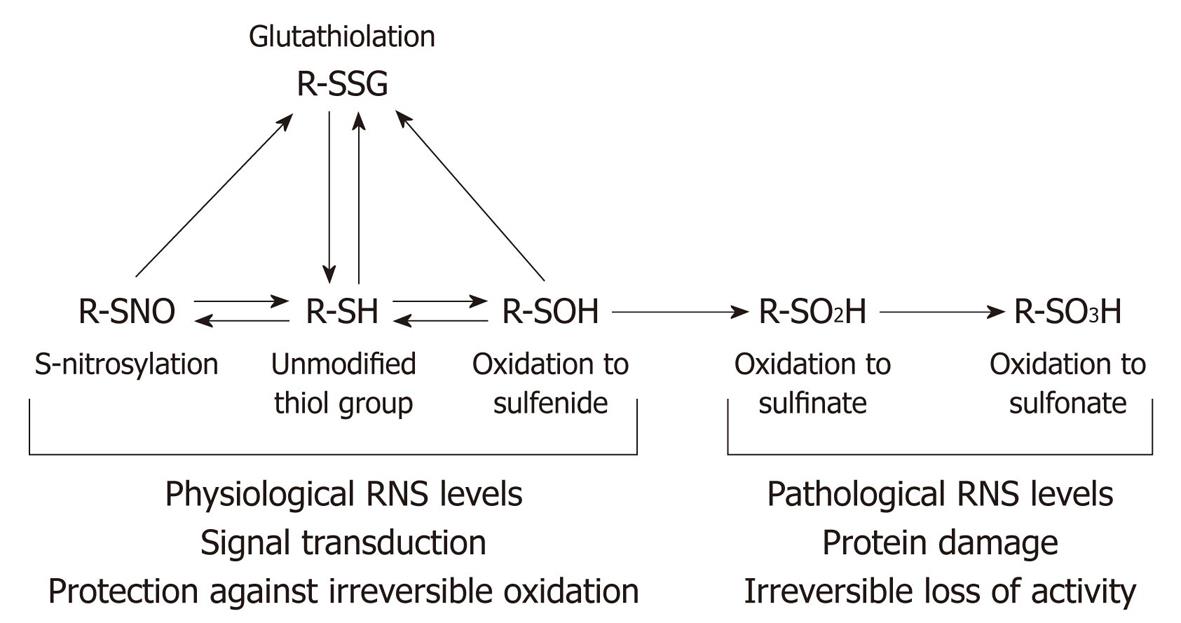Copyright
©2011 Baishideng Publishing Group Co.
World J Cardiol. Sep 26, 2011; 3(9): 281-302
Published online Sep 26, 2011. doi: 10.4330/wjc.v3.i9.281
Published online Sep 26, 2011. doi: 10.4330/wjc.v3.i9.281
Figure 4 Nitric oxide and reactive nitrogen species-mediated modifications of thiol residues.
Thiol (SH) residues undergo a series of reversible modifications in response to changes in the redox potential or exposure to physiological levels of reactive nitrogen species or nitric oxide. Oxidation of the thiol to the corresponding sulfenic acidor the formation of a disulfide bond between the thiol and glutathione (glutathiolation) are reversible either by changes in the equilibrium, or enzymatic restoration of the thiol group by thiol transferases. Further oxidation of a glutathiolated residue is not possible, so glutathiolation confers protection against oxidative damage for as long as it persists. However, exposure of the thiol group or the sulfenic acid to pathological levels of reactive nitrogen or oxygen species results in the formation of sulfinate and then sulfonate; these are irreversible modifications which result in protein damage and loss of activity. RNS: Reactive nitrogen species. Modified from: Figure 2, Klattp et al[133].
- Citation: Sharma V, McNeill JH. Parallel effects of β-adrenoceptor blockade on cardiac function and fatty acid oxidation in the diabetic heart: Confronting the maze. World J Cardiol 2011; 3(9): 281-302
- URL: https://www.wjgnet.com/1949-8462/full/v3/i9/281.htm
- DOI: https://dx.doi.org/10.4330/wjc.v3.i9.281









